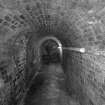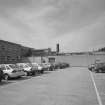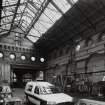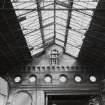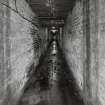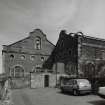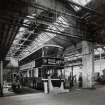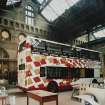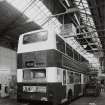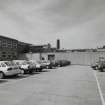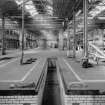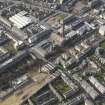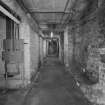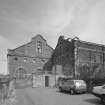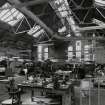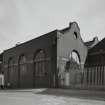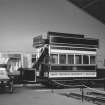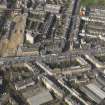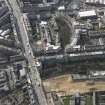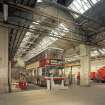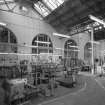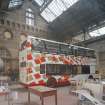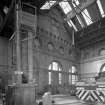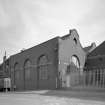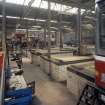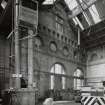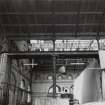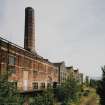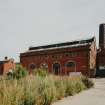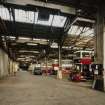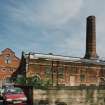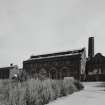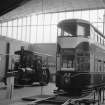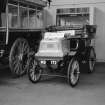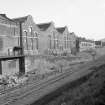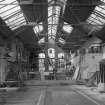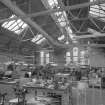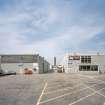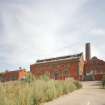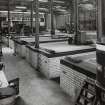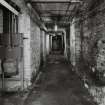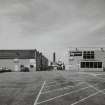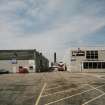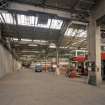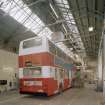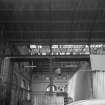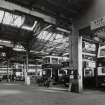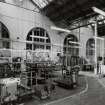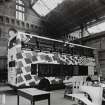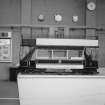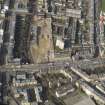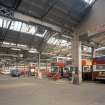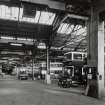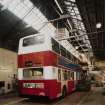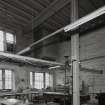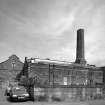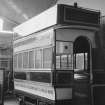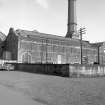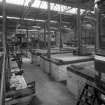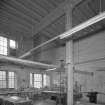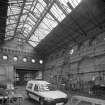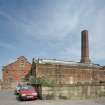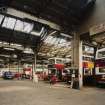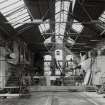Edinburgh, Leith Walk, Shrub Place Lane, Shrubhill Tramway Workshops And Power Station
Air Raid Shelter (Second World War), Power Station (19th Century), Tram Depot (19th Century)
Site Name Edinburgh, Leith Walk, Shrub Place Lane, Shrubhill Tramway Workshops And Power Station
Classification Air Raid Shelter (Second World War), Power Station (19th Century), Tram Depot (19th Century)
Alternative Name(s) Dryden Street; Pilrig; Shrubhill Omnibus Depot And Garage; Edinburgh Corporation Transport, Tram Museum; Croall And Son
Canmore ID 174942
Site Number NT27NE 849
NGR NT 26306 75159
Datum OSGB36 - NGR
Permalink http://canmore.org.uk/site/174942
- Council Edinburgh, City Of
- Parish Edinburgh (Edinburgh, City Of)
- Former Region Lothian
- Former District City Of Edinburgh
- Former County Midlothian
NT27NE 849 26306 75159
For adjacent tramway power standards (in Dryden Street, on feeder route into the rear entrance of the depot), see NT27NE 850.
Works [NAT]
OS 1:1250 map, 1983.
(Location cited as NT 263 572). Shrubhill Tramway Workshops and Power Station, Dryden Street, power station opened 1898. A tall 8-bay, 1-storey and basement ashlar block, 3 wide single-storey bays, and a single-storey, 4-bay rubble block with round-headed windows and 8 circular windows. All these have roof-ridge ventilators. The complex is dominated by an octagonal brick chimney, with decorated top section on a square masonry base. The power station housed the haulage engines for cable-tramway operations.
J R Hume 1976.
Archaeological Evaluation (16 April 2008 - 17 April 2008)
NT 2630 7515 Work was carried out, 16–17 April 2008, ahead of redevelopment. A desk-based assessment suggested that the first significant historical reference to the site was as a possible site of public executions in the 16th–17th centuries. In the 17th century the area was extensively quarried for mortar sand and in around 1800, Shrub House, a small country house and gardens was erected on the site. Shrub House and its gardens were gradually encroached upon by subsequent developments, including the Edinburgh Street Tramways stables and workshops. The horse-drawn trams were replaced by a cable system in the late 19th century, the development of which included the construction of a number of highly decorated brick buildings. The remainder
of the site, including Shrub House, was demolished in the 1960s to be replaced by offices and sheds for East Lothian Transport.
The earliest recorded deposit was of glacial material, overlain with later deposits of windblown sands. The lack
of windblown material toward the NW end of the site was thought to reflect 17th-century quarrying activity. This
quarrying combined with the natural slope of the area accounts for the drop of over 3m in ground level from the
front to the rear of the site.
Fragmentary sandstone walls were identified toward the centre of the site and these were thought to represent
buildings associated with the Tramway Companys stores and stables, as depicted on the OS map of 1877.
Trenches excavated on the site of the former Shrub House revealed that the structure had been entirely demolished and the site comprehensively levelled. The only structural remains in the trenches relating to buildings erected in the 1970s.
K Bain (Headland Archaeology Ltd), 2008
Watching Brief (6 October 2016 - 12 October 2016)
NT 2640 7505 Watching briefs were carried out, 6–12 October 2016, during groundworks associated with redevelopment at the site of the former transport depot. The work monitored part or full removal of a tunnel associated with a late 19th-century steam power plant for a cable driven tram system. The tunnel ran from the engine room at the back of the site
across to the former tram line along Leith Walk. Features recorded within the tunnel indicated that it had been roofed and was further modified after it went out of use as a cable shaft in 1922.
Information from M Dalland (Headland Archaeology Ltd) November 2016. OASIS ID: headland1-267661
Standing Building Recording (23 June 2021 - 6 August 2021)
NT 26260 75180 A historic building recording was undertaken during the downtaking of the structural trusses of the engine house which formed part of the Shrubhill tram depot. The building was erected in 1898 as part of the development of the Tram Depot. Previous HBR work comprised an enhanced level survey of the entire structure, along with other buildings on the site relating to the tram depot. As part of the current works, the process of removal of the trusses was monitored and the exposed elements of the wallheads inspected to identify if further additional enhanced HBR was required. It was identified that this was not required as no additional detail of construction or decorative elements were exposed, but a detailed photographic record was made of the trusses once removed and confirmation was received that they would be stored and reused within the development.
S Cox – Headland Archaeology (UK) Ltd
(Source: DES Vol 22)
OASIS ID: headland1-507868

























































































